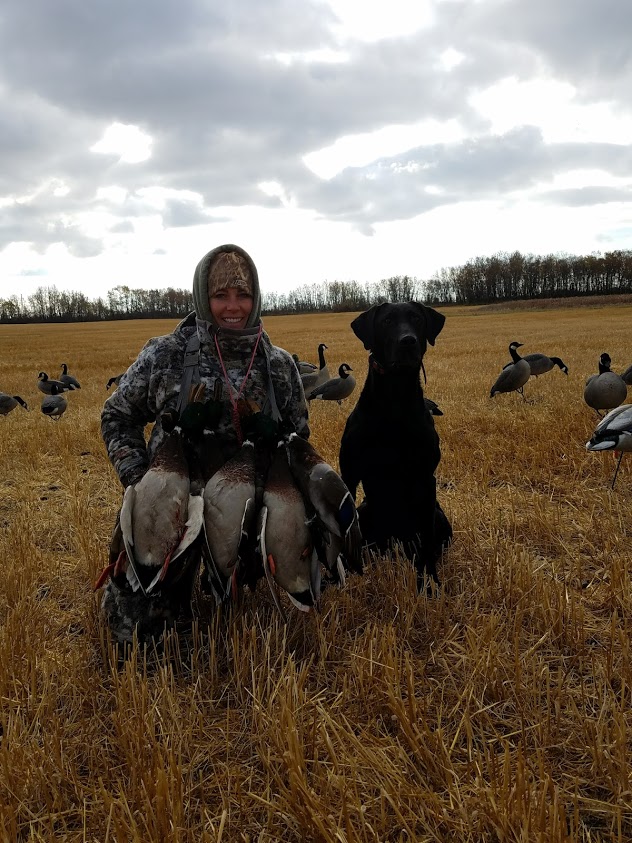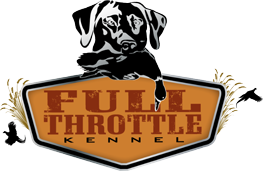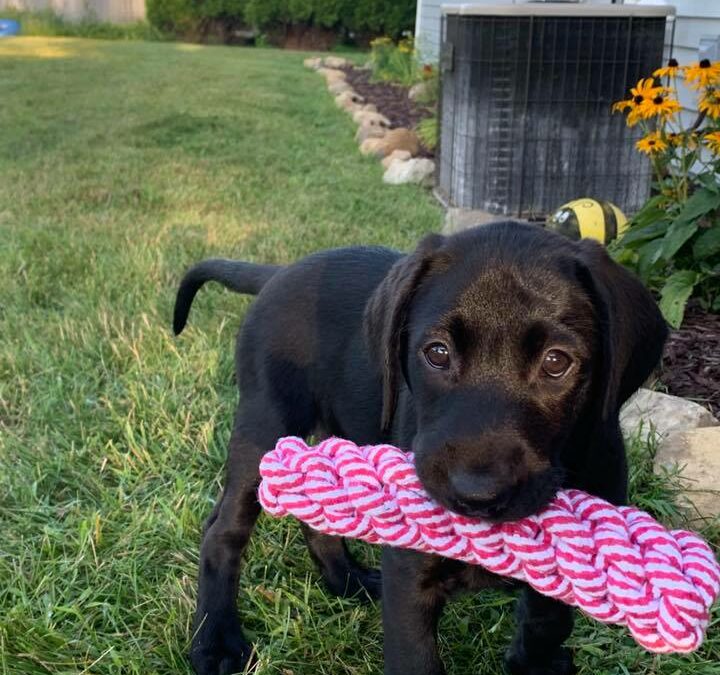Depending on your view of retriever training, you could say the process hasn’t changed much since the days when Canadian waterfowlers trained now extinct St. John’s water dogs to pick up their ducks. On the other hand, if you could transport those 19th Century hunters to this day and age, they likely would be amazed at the things our retrievers do.
What is it about turning a high-spirited pup into a reliable hunting partner that will always remain the same? To name a few things: training with consistency, using lots of repetition and building a foundation with excellent obedience. T hose principles apply whether you’re molding a hunting dog, working toward a hunt-test title or planning to compete in field trials.

What has changed is the speed and efficiency with which we’ve learned to create finished retrievers. As recently as a few decades ago, some pros advised waiting until a dog was 12 to 18 months old before beginning formal training. Today it’s not uncommon to see steady, reliable retrievers doing great things before they’re even a year old. And it seems like every year I see more dogs achieve their AKC Master Hunter titles before they’ve reached their second birthdays.
These examples aren’t the result of new high-speed training programs. It’s more about the retriever community understanding that dogs from excellent breeding have a remarkable capacity for learning at a young age.
I am extremely fortunate to have learned from some of the best trainers in the business. As I continue to refine my own training regimen, I’ve put into early practice a number of principles that make the advanced training stages go more smoothly. My goal is to develop dogs that are over-the top enthusiastic about retrieving but also in control enough to focus on the job at hand. That’s where I want a young dog’s head to be when I go to the next level with things like force fetching and introduction to the electronic collar.
Today most people understand that you don’t have to spend the early period of a pup’s life waiting for the dog to be “old enough” to learn. Until around six months, “training” is a balance between letting your retriever explore and learn new things, instilling some basic obedience and introducing retrieving.
Let’s start with the fun stuff: retrieving. If your pup came from a decent breeding, the determination to chase, catch and bring things back should already be there. Some puppies turn it on more quickly than others, and a pup that is excited about retrieving one day may be distracted and not as interested the next. Regardless, stick with the following guidelines when starting retrieving games.
Keep sessions short. I have clients complain that their young dog gets tired of retrieving too quickly. Then I find out they’re talking about after a dozen or 15 throws. Well, pups do wear out quickly, and they have short attention spans to begin with. So Rule No. 1 is to always quit while your dog is fired up and wanting more. If that means you’re doing only two or three tosses once or twice a day, that’s fine. Your obligation is to encourage that happy attitude with lots of enthusiasm and praise. The second your pup shows disinterest-when it stops having fun-put the bumper away and find something else to do.
Go easy on discipline during retrieving. Everything about retrieving should be fun, fun, fun. Don’t lose your temper if your pup refuses to chase the bumper, lays down to chew on it or doesn’t want to bring it directly back. Relax! We’re talking about puppies, and that’s what they do. Don’t run after a pup that doesn’t want to return with the bumper; instead turn and run away clapping your hands and calling enthusiastically. Most of the time the pup will follow you. And don’t try to force your pup to pick up an object by cramming it in its mouth. It would be tragic to create a bad association with retrieving at this stage.
A tip for proper hold. It’s kind of cute when a puppy drags a dummy around by the string or carries it like an oversize cigar, but you don’t want those habits to continue when it’s time for real training. OK, it’s not the end of the world, but it could an irritating problem that you’ll have to fix later. A friend showed me the perfect solution, and I’ve been using it ever since: paint rollers. Unlike regular bumpers, they don’t have that skinny end where the rope attaches that dogs like to clamp onto, so there’s only one way for pups to pick them up. They’re lightweight, and they even float. I’ve never found a pup that didn’t like them.
Go ahead and start marking drills. Once your pup is really stretching its legs and capable of completing retrieves at distances farther than you can throw, find a helper to start doing the throwing. With the helper standing out in front, start out in short grass with white bumpers, so your dog is successful on every mark. This helps your pup learn a number of things: to bring the bird back to you and not the person who threw it, to mark off of the gunner/thrower, and to be confident in going after longer marks.
While the length of the fun stage of retrieving varies, it generally continues until a pup has its adult teeth, which can be anywhere from four to seven months. What else can you be doing during this time? Plenty. This is the time to be working on “Heel,” “Sit” and “Here.” (I don’t use the command “Stay,” because when a dog sits, it should stay sitting until you call it or release it to do something else.) Without that foundation, you’re never going to reach your goal of a truly reliable, steady retriever. Also take your pup for walks in different types of cover, which helps it develop a bold attitude in new places.
And a reminder: Each time you’re in the yard or out exploring, clip a check cord onto your pup’s collar, so the dog gets used to dragging it around. This is important; that line is your only means to catch the pup on the day it decides it wants to take off and explore without you. It also reminds the pup that it’s never truly out of your reach.
Maybe I shouldn’t say that one obedience command is more important than the others, but I will emphasize that, for a top-notch waterfowl dog, “Sit” is the command that your dog must be 100-percent compliant with-anytime, anywhere. Your dog should remain sitting until you release it, no matter how long it has to wait.
For a long time it was preached by some trainers that you should never make a young dog wait to retrieve, the thought being that you might take some of the drive out of it. This way of thinking set up a predictable and often not-so-great next step in the dog’s learning cycle. It went something like this: Up until it was six to eight months old, the pup was allowed to run wild and instantly chase everything it saw fall. Then came the day that it was time to steady the dog and teach it that breaking was not acceptable. How to accomplish this? Pressure-and lots of it. Pick your poison: Turn the dog upside down with a heave-ho on a rope and choke chain, or light it up with the high setting on an e-collar . Some advised using a slingshot to peg the dog in the butt as it raced for the retrieve (good luck with that) or even firing a load of birdshot at the dog’s backside out around the 60-yard mark (insert incredulous remark of your choice here).
Today, thank goodness, we know a few things that keep the situation from getting so out of control. First, this is all about obedience, not retrieving-two separate things. You can start teaching your pup to sit and stay not long after you’ve brought it home and it has some confidence in its surroundings. Keep in mind that every time you interact with your young retriever, you’re setting the stage for more formal training down the road. At feeding time, for example, don’t let your dog jump up and try to grab the food. Instead, make the pup sit before you set down the bowl. Work up to making the pup wait a few seconds before you say, “OK!” and release it to eat.
Eventually you’ll progress to the point where your dog is sitting and staying for longer periods and won’t move until you release it. Not only do you now have an obedient dog, but you also have set up your dog to be steady-and to be happy about it!
What happens next in the training progression is a simple transition. What I’ll describe here is a simplified process based on a series of drills taught by pro trainer Bill Hillmann as the “Traffic Cop” method. Here are the basics.
With your dog sitting and on a check cord, take a few steps to the front, face the dog, and then flip a bumper off to one side or the other. Just a few yards is plenty, as this isn’t retrieving practice; it’s an obedience/ steadiness drill. There’s a good chance the dog will make a break for the bumper. No big deal! Simply be ready to stop the dog with the check cord, and then take the dog back and sit it down at the original spot. Walk over and pick up the dummy. Go through the process again. Be prepared to correct as many times as necessary. It might be twice, or it might be 20 times. I’m willing to bet that if you were consistent in your obedience training, it won’t take too many tosses before your dog remains sitting after the throw. When the dog does remain steady, wait a second or two, and then release it by saying its name enthusiastically; commanding, “Fetch!” or using whatever release command you want. Lay on the praise when the dog brings back the bumper.
Hillmann’s complete Traffic Cop program goes into much more detail than I can give here, and I enthusiastically recommend that you go online to learn more about it: billhillman.net.
There’s no single, best way to train a retriever, but if nothing else, I hope I’ve given you some things to think about when you start training your next waterfowl dog. Understanding the importance of starting early and using obedience as a stepping stone to a low-pressure introduction to steadiness are two principles that are helping us produce finished dogs more efficiently than ever.
FTK Pro-Tips
Read exclusive training tips and articles writted by Jessie Richards at Full Throttle Kennel.
Jessie Richards owns and operates Full Throttle Kennel, in Campbellsport, Wisconsin. She specializes in training all breeds of retrievers for hunting and AKC hunt tests, as well as guides upland hunters and takes time in October for waterfowl hunting in Saskatchewan.

